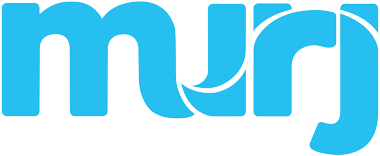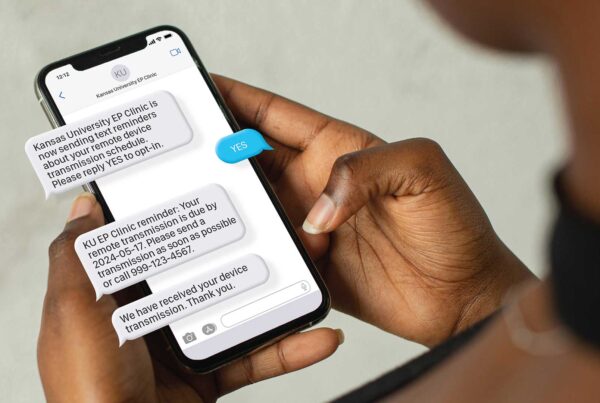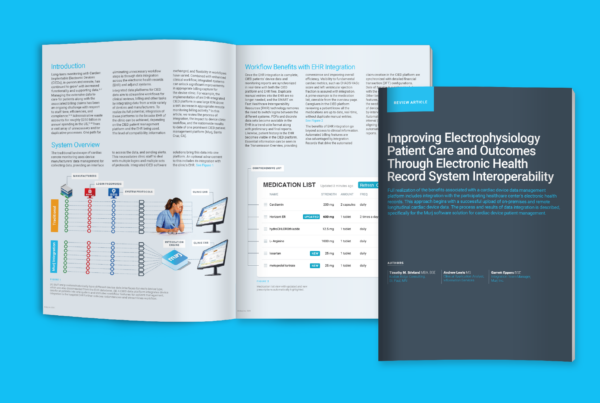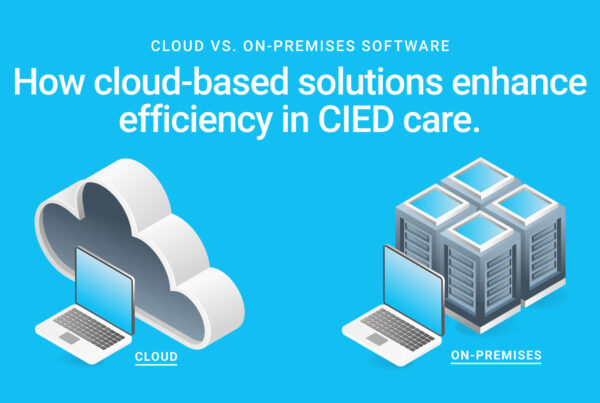The adage “doing more with less” has become par for the course for cardiac implantable electronic device (CIED) clinics. Staffing challenges created by the ongoing COVID-19 pandemic, as well as endemic healthcare worker shortages, have made it difficult for clinics to keep up with growing patient populations and transmission volumes.
Hiring and training additional staff members is a costly and time-consuming process. And operating with a skeleton crew can result in overworked and overwhelmed staff, and lead to low employee satisfaction and additional turnover.
It can be a major challenge to determine the optimal staffing structure that keeps costs manageable, while ensuring staff members are fulfilled and productive, not stressed.
For many CIED clinics, it may seem daunting to devote the time and resources to solving this challenge. As a result, many device clinics enlist the help of expensive third-party service providers.
But solving long-term CIED staffing needs doesn’t need to be as challenging, nor as expensive, as it has been.
True staffing optimization starts with knowledge of where you stand—and where you can improve
Listen to your team
Opening the lines of communication with existing employees is the first step to addressing staffing challenges for any CIED clinic. Who better to consult than the people that know your clinic inside and out, and understand how it functions instinctually? Engaging your existing staff in conversations about how things can improve day-to-day can make a world of difference.
Consider scheduling a weekly lunch event with an open agenda, and encourage staff members to share their concerns and potential solutions related to staffing challenges. Set up one-on-one meetings with employees over coffee to learn their opinions on how things are running in a more private setting. Even placing an anonymous suggestion box in the office can yield valuable insights. The key is to make your staff feel comfortable sharing their opinions and understand that their voices are heard.
Learn from your peers
Peer clinics can be a wealth of information on staffing structure. Talk to other CIED clinics of similar size and structure to yours. What solutions have worked for them? What challenges do they still have to solve? What systems and processes have they implemented?
A commitment to continuous improvement, combined with listening to staff members and key stakeholders, will form the foundation of your clinic’s approach to alleviating concerns around staffing.
Practical approaches to CIED staffing optimization
After consulting your staff and other stakeholders, as well as peer clinics, consider the following strategies for optimizing your clinic’s staffing structure.
Define roles and responsibilities
Outlining the scope of each role in the CIED clinic is essential to running more efficiently. Clearly define what falls under the purview of each role in your clinic, and ensure employees stick to their main duties and responsibilities.
If you’re worried about employees falling into a rut when confined to a specific role, consider implementing a program where employees rotate roles on a scheduled basis. This prevents work from getting dull, and employees gain experience in multiple aspects of the clinic, meaning they’re better prepared to fill in gaps in the event of a staffing shortage.
Create an administrative position and advocate for automation
Prioritizing patient care should be top of mind for all CIED clinics. Where possible, reduce administrative duties that impede clinical care. Consider creating an individual position or department that’s solely responsible for admin work. These nonclinical teams can oversee billing, appointment scheduling, enrolling patients in remote monitoring, and other clerical tasks.
And when the opportunity for automation presents itself, embrace it. EHR integration for automatic DFT billing, automatic interval tracking, and advisory management can dramatically reduce the admin burden, and in turn improve staff retention.
Explore work from home arrangements
In the wake of COVID-19, working remotely has become the norm in numerous environments. Why shouldn’t the CIED clinic be one of them? With the ability to monitor patients remotely, you can allow staff to work from home, sparing them from time-consuming commutes and other trappings of office life. Plus, if staff members are feeling under the weather but not too sick to work, they can complete tasks from home and avoid exposing coworkers.
“Our RN never would have been able to work from home before Murj. This may sound dramatic, but Murj may actually be saving a life.”
Joshua Lader, MD, Stamford Hospital Cardiac Clinic
How Murj can help
Short term services and a long-term technology platform can meet most every need of a modern CIED clinic. That—combined with access to a peer-group of high-performing clinical operators—is where Murj can lend a hand.
Murj delivers next generation workflow technology and short-term clinical staffing services to empower healthcare providers to modernize their cardiac device clinics.
- Software: The Murj cloud-based platform is streamlined, secure, and easy-to-use—and can be accessed from anywhere.
- Staffing: Murj staffing services can be used to provide stop gap resources for a clinic when they are short on staff, and Murj partners can provide long-term remote monitoring when needed.
- Community: The Murj community, including regional user group meetings, provides a peer-based resource that can educate and share best practices.
“I have never been so excited to look at my workflow. There’s no more paperwork and communication pertinent to the patient is all on one page. The time I’m saving from reviewing repetitive transmissions is incredible because now I can use that time to focus on more important tasks.”
Carla Lopez, Device Clinic LVN, the Heart Institute of East Texas
Staffing challenges are not a foregone conclusion
Burdened by large amounts of device data and the day-to-day tasks of coordinating billing and payments, clinics often find it challenging to allot the necessary time and resources to improve processes and streamline workflows. This only compounds staffing issues, and can lead to exhausted employees, and negatively impact reimbursement capture and patient care.
By taking an active role in optimizing your clinic’s staffing structure, implementing cutting-edge technology to streamline workflows, and partnering with vendors that can efficiently supplement your staff, you can ensure your clinic runs like a well-oiled machine, no matter what staffing challenges you face.
Interested in learning more about how Murj can help your clinic deal with staffing challenges? Connect with us today.





